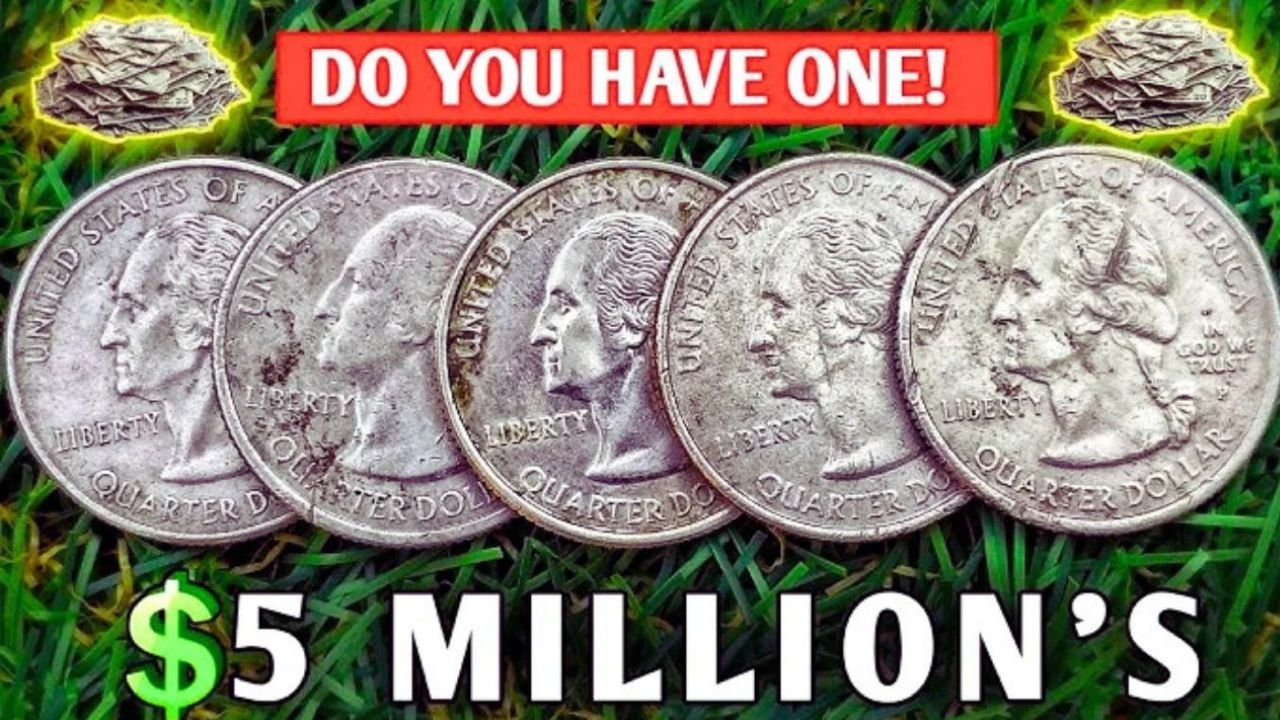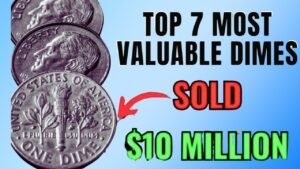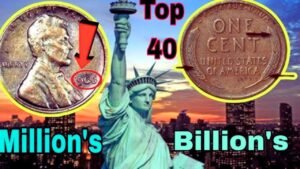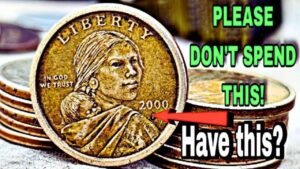The 50 State Quarters program, launched in 1999, turned pocket change into a collector’s dream. These coins, with unique state designs, sparked a craze that’s still alive today. Some quarters, thanks to rare errors or pristine condition, are now worth thousands—or even millions—at auctions. Got some old change? You might be sitting on a goldmine. Let’s dive into the top 10 valuable state quarters, how to spot them, and why they’re worth so much.
Why Are Some State Quarters So Valuable?
Certain quarters stand out due to minting errors, low production runs, or exceptional condition. Errors like extra design elements or coins struck on the wrong metal make them rare. High-grade coins, rated MS67 or above by services like PCGS or NGC, fetch top dollar. The hunt for these treasures keeps growing, driving up prices at auctions and online marketplaces like eBay.
What Makes a Quarter Rare?
- Minting Errors: Mistakes like double strikes or wrong planchets create one-of-a-kind coins.
- High Grades: Coins in near-perfect condition (MS67–MS70) are scarce.
- Low Mintage: Some states had fewer coins produced, increasing demand.
- Collector Appeal: Unique designs or historical significance boost value.
The Role of Grading Services
Professional grading by PCGS or NGC confirms a coin’s condition and authenticity. A high grade can turn a 25-cent quarter into a $10,000 treasure. Always get rare finds graded before selling to maximize value.
Top 10 Most Valuable State Quarters in 2025
These 10 quarters have sold for jaw-dropping prices due to their rarity or condition. Check your collection for these gems, listed with their key features and record sale prices.
| Quarter Name | Year & Mint | Key Feature or Error | Top Sale Price |
|---|---|---|---|
| Delaware Experimental | 1999-P | Struck on Sacagawea alloy | $5,200 |
| Wisconsin Extra Leaf High | 2004-D | Extra maize leaf on husk | $7,500 |
| Connecticut Wrong Planchet | 1999-P | Struck on gold-colored Sacagawea metal | $12,000 |
| South Carolina Regular | 2000-P | MS69 grade, ultra-rare condition | $9,500 |
| Texas Grease Error | 2004-P | Grease-filled die, blurred design | $11,200 |
| Maine Regular | 2003-D | MS68 grade, pristine condition | $2,800 |
| Pennsylvania Experimental | 1999-P | Experimental alloy planchet | $3,100 |
| North Dakota Regular | 2006-D | MS68 grade, scarce in high grades | $4,200 |
| New Mexico Regular | 2008-D | MS69 grade, rare perfection | $3,000 |
| Virginia Regular | 2000-P | MS68 grade, high demand | $2,600 |
Prices based on recent sales at Heritage Auctions and eBay (as of August 2025).
Spotlight on Top Finds
- Wisconsin Extra Leaf (2004-D): Look for an extra leaf on the corn husk. This error makes it one of the most sought-after quarters, with top sales hitting $7,500.
- Connecticut Wrong Planchet (1999-P): These gold-colored quarters were struck on Sacagawea dollar metal, making them thicker and heavier. One sold for $12,000 in 2024.
- Texas Grease Error (2004-P): A die filled with grease caused a blurry design, creating a unique look that fetched $11,200 at auction.
How to Spot Valuable Quarters
You don’t need to be a pro to find a valuable quarter. With a few tools and tips, you can start hunting today.
Step-by-Step Guide to Checking Your Coins
- Gather Your Quarters: Look for coins from 1999–2008, the State Quarters program years.
- Use a Magnifying Glass: Check the back for oddities like extra leaves, doubled designs, or off-center strikes.
- Compare to References: Use trusted sites like PCGS CoinFacts or NGC Coin Explorer for error images.
- Check the Mint Mark: Look for “P” (Philadelphia) or “D” (Denver) near Washington’s head.
- Assess Condition: Coins with no scratches or wear are more likely to be valuable.
Common Errors to Look For
- Extra Leaves or Lines: Wisconsin’s extra leaf is a famous example.
- Wrong Planchet: Coins struck on the wrong metal, like gold-colored Sacagawea alloy.
- Double Die: Designs that appear doubled or blurry due to minting mistakes.
- Strike-Through Errors: Grease or debris on the die causing missing or smudged details.
Tools You’ll Need
- A 10x magnifying glass or loupe ($10–$20 online).
- Good lighting to spot subtle errors.
- A coin reference guide or app like the PCGS CoinFacts app.
How to Sell Your Valuable Quarters
Found a potential winner? Here’s how to turn it into cash.
Get It Graded
Send your coin to PCGS or NGC for professional grading. A high grade (MS67+) can boost its value by thousands. Grading fees start at $20–$50, but it’s worth it for rare coins.
Selling Options
- Auction Houses: Heritage Auctions or Stack’s Bowers offer high visibility for top coins.
- Online Marketplaces: eBay or Etsy are great for quick sales, but watch for fees.
- Local Coin Dealers: Visit shops or coin shows for fast deals, though prices may be lower.
- ANA Events: The American Numismatic Association hosts events where collectors buy directly.
Tips for Maximizing Value
- Get multiple appraisals before selling.
- Avoid cleaning coins—it can ruin their value.
- Use insured shipping for valuable coins to grading services or buyers.
The Future of State Quarters Collecting
The State Quarters program ended in 2008, but interest keeps growing. Social media platforms like X and TikTok have sparked a new wave of collectors, especially among younger generations. As fewer coins remain in circulation, rare ones could climb even higher in value. Apps like CoinScope make it easy to scan and identify coins, keeping the hobby alive.
Why Collecting Is Booming
- Nostalgia: The program reminds people of the early 2000s.
- Accessibility: Anyone can start with pocket change.
- Investment Potential: Rare coins often outpace inflation.
FAQs About Valuable State Quarters
1. How do I know if my state quarter is valuable?
Check for minting errors like extra leaves or wrong metals using a magnifying glass. Compare to images on PCGS or NGC websites. Get it graded if you suspect it’s rare.
2. Where can I sell my rare quarters?
Try auction houses like Heritage Auctions, online platforms like eBay, or local coin dealers. Coin shows hosted by the ANA are also great options.
3. What’s the most valuable state quarter?
The 1999-P Connecticut quarter struck on a Sacagawea planchet recently sold for $12,000 due to its unique gold-colored appearance.
4. Can I clean my quarters to make them worth more?
No, cleaning coins can damage them and lower their value. Leave them as-is and get them professionally graded.
5. Are all state quarters worth more than 25 cents?
Most are worth only face value. Only those with errors, low mintage, or high grades (MS67+) fetch big money.
Start Your Treasure Hunt Today
The 50 State Quarters program turned everyday change into a collector’s paradise. With some quarters now worth thousands, it’s time to check your jars, wallets, or old piggy banks. Grab a magnifying glass, look for errors, and you might uncover a hidden fortune. Whether you’re in it for fun or profit, the thrill of the hunt is unbeatable. Start digging through your change today—who knows what treasure you’ll find!




